
Roots
The story of hair, particularly textured hair, extends far beyond mere aesthetics; it is a profound narrative etched into identity, culture, and personal journey. To truly grasp the distinctions between lye and no-lye relaxers, we must first settle into the foundational understanding of what these chemical formulations seek to achieve and the very structure they aim to reshape. Consider, for a moment, the inherent resilience and unique architecture of textured strands.
Each curl, coil, or wave possesses a distinct character, shaped by the arrangement of disulfide bonds within the hair’s innermost layer, the cortex. It is this intricate blueprint that chemical relaxers endeavor to alter, creating a smoother, straighter appearance.
The historical context of hair straightening, particularly within Black communities, reveals a complex interplay of adaptation, societal pressures, and the enduring quest for personal expression. From early practices involving hot combs and greases to the advent of chemical formulations, the desire for straightened hair has often been intertwined with aspirations for assimilation and perceived societal acceptance. This history, while sometimes painful, underscores the deep personal significance of hair choices and the continuous evolution of beauty standards.

The Hair’s Intrinsic Design
At its very core, hair is a protein filament, primarily composed of keratin. This keratin forms a robust structure, with its strength and shape dictated by the numerous disulfide bonds that act as internal scaffolding. The more tightly coiled a hair strand, the greater the number and arrangement of these bonds.
When a chemical relaxer is applied, its fundamental purpose is to disrupt these bonds, allowing the hair to be mechanically restyled into a straighter form. This chemical alteration, known as lanthionization for hydroxide relaxers, is a permanent change to the hair’s structure.
Understanding the hair’s natural pH is also vital. Hair and scalp maintain a slightly acidic pH, typically ranging between 4.5 and 5.5. This natural acidity helps keep the cuticle, the hair’s outermost protective layer, closed and smooth.
Chemical relaxers, by their very nature, are highly alkaline substances, possessing pH levels significantly higher than that of hair. This alkalinity is what allows them to open the cuticle and penetrate the cortex to initiate the straightening process.
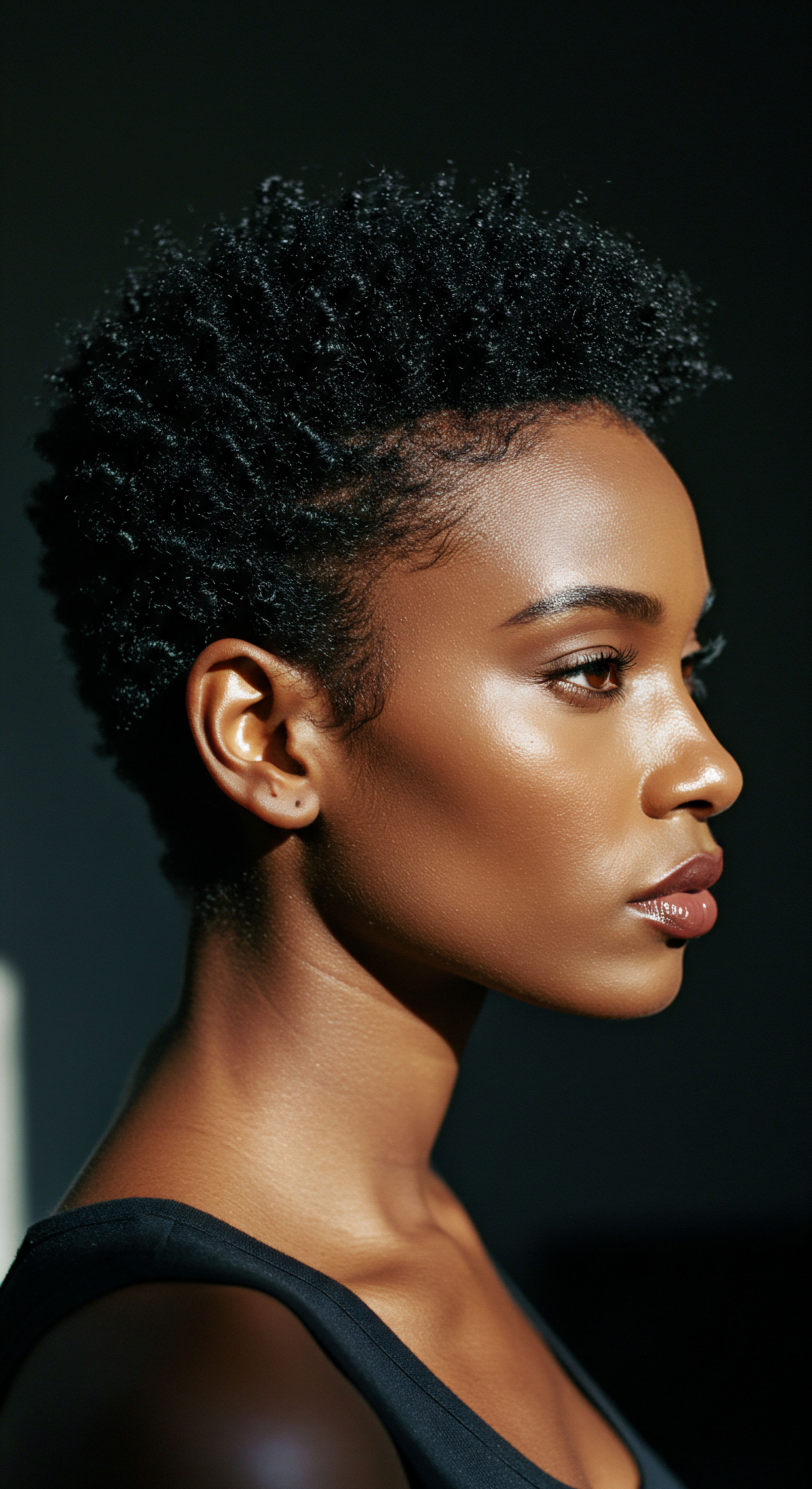
What Chemical Bonds are Altered by Relaxers?
The principal chemical bonds targeted by relaxers are the Disulfide Bonds. These strong covalent bonds link cysteine amino acids within the keratin protein chains. Imagine these bonds as tiny, sturdy bridges holding the hair’s coiled structure together. When a relaxer is applied, the alkaline agents break these bridges.
Once broken, the hair can be physically straightened. During the subsequent neutralization step, these bonds are reformed in their new, straightened configuration, effectively locking the hair into its new shape.
- Disulfide Bonds ❉ These covalent bonds are the primary targets, responsible for the hair’s natural curl pattern.
- Hydrogen Bonds ❉ While not permanently altered by relaxers, these weaker bonds are temporarily broken by water and heat, contributing to the hair’s malleability during styling.
- Salt Bonds ❉ Also weaker and susceptible to pH changes, these bonds are disrupted by the alkaline environment of the relaxer, further aiding in the softening of the hair.
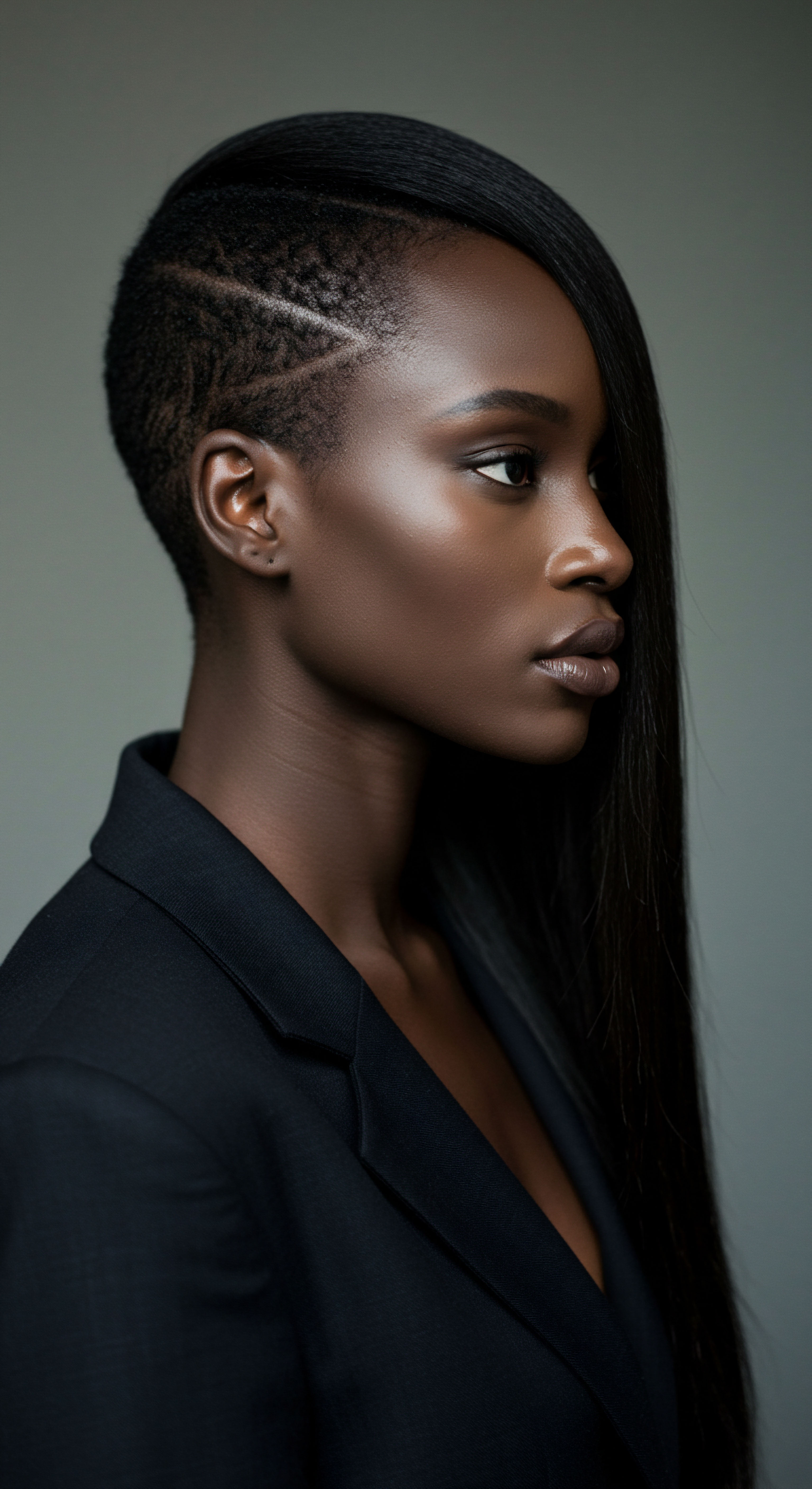
The Elemental Components of Relaxers
Relaxers fall broadly into two main categories ❉ lye relaxers and no-lye relaxers. The defining difference lies in their primary active alkaline ingredient. This chemical distinction leads to variations in their mechanism of action, processing time, and the subsequent impact on the hair and scalp.
Lye and no-lye relaxers differ fundamentally in their primary active chemical component and their subsequent interaction with the hair’s internal structure.
Lye Relaxers, also known as sodium hydroxide relaxers, contain sodium hydroxide (NaOH) as their active ingredient. This compound is a powerful alkali, giving lye relaxers a very high pH, typically ranging from 12 to 14. Their potency allows them to break down the hair’s disulfide bonds quickly and effectively, resulting in significant straightening. Because of their rapid action and high alkalinity, lye relaxers are generally considered professional-use products, demanding precise application and careful timing to minimize scalp irritation or chemical burns.
No-Lye Relaxers, conversely, utilize different active ingredients, most commonly a combination of calcium hydroxide (Ca(OH)₂) and guanidine carbonate, which react to form guanidine hydroxide. Other no-lye relaxers may use lithium hydroxide (LiOH) or potassium hydroxide (KOH) as their primary alkaline agent. These formulations generally have a slightly lower pH compared to lye relaxers, typically ranging from 9 to 11. While still highly alkaline, their perceived milder nature has often led to their marketing for at-home use and for individuals with sensitive scalps.
| Relaxer Type Lye Relaxer |
| Main Active Ingredient Sodium Hydroxide (NaOH) |
| Typical PH Range 12.0 – 14.0 |
| Relaxer Type No-Lye Relaxer |
| Main Active Ingredient Calcium Hydroxide + Guanidine Carbonate (forming Guanidine Hydroxide); or Lithium Hydroxide; or Potassium Hydroxide |
| Typical PH Range 9.0 – 11.0 |
| Relaxer Type These chemical variations contribute to distinct processing characteristics and potential impacts on hair and scalp. |

Ritual
Stepping beyond the elemental composition, our consideration turns to the practical application and the immediate consequences of these chemical interventions. The act of relaxing hair is often a carefully choreographed ritual, a testament to the transformative power sought. Yet, this transformation comes with its own set of considerations, impacting the hair’s texture, its inherent moisture, and the delicate balance of the scalp. The nuances of application, processing, and post-treatment care diverge significantly between lye and no-lye systems, influencing the overall experience and the health of the hair in the long term.
The application of a relaxer is a delicate process, demanding precision and an understanding of the hair’s responsiveness. Both lye and no-lye relaxers initiate a chemical reaction that softens the hair, allowing it to be combed into a straighter configuration. This process, termed lanthionization for hydroxide relaxers, permanently alters the hair’s disulfide bonds. The hair’s cortex is elongated, thereby stretching its original curl pattern.

Processing and Hair Interaction
Lye relaxers, with their potent sodium hydroxide base, operate with remarkable speed. Their high alkalinity allows for rapid penetration of the hair shaft and swift breakage of disulfide bonds. This quick action necessitates professional application, as even a slight over-processing can lead to severe damage, including excessive breakage and scalp burns. The efficiency of lye relaxers means they can achieve a very straight result, often leaving the hair with a characteristic silky feel.
Conversely, no-lye relaxers, primarily using calcium hydroxide and guanidine carbonate, typically work at a slower pace. Their slightly lower pH means the chemical reaction proceeds more gradually. This slower action is often perceived as gentler on the scalp, making them a popular choice for individuals who experience sensitivity or for at-home use.
However, this perceived gentleness does not equate to a lack of chemical potency. No-lye relaxers still significantly alter the hair’s structure and require careful handling.

Do No-Lye Relaxers Dry Hair More Than Lye Relaxers?
A common observation within the textured hair community suggests that No-Lye Relaxers can sometimes leave the hair feeling drier or more brittle than lye relaxers. This phenomenon is often attributed to the formation of calcium deposits on the hair shaft during the chemical process. When calcium hydroxide and guanidine carbonate react, insoluble calcium carbonate can form, coating the hair and potentially impeding its ability to absorb moisture effectively.
To counter this, using a Chelating Shampoo is often recommended after a no-lye relaxer treatment. Chelating shampoos are specifically formulated to remove mineral buildup, helping to restore the hair’s natural moisture balance and shine. In contrast, lye relaxers, while more aggressive on the scalp, tend to rinse cleanly from the hair, leaving fewer residues that might interfere with moisture absorption.
No-lye relaxers, while gentler on the scalp, can leave calcium deposits on the hair, potentially leading to increased dryness unless specifically addressed with chelating products.

The Crucial Neutralization Step
Regardless of the relaxer type, the neutralization step is paramount. After the desired straightening is achieved and the relaxer is thoroughly rinsed from the hair, a neutralizing shampoo is applied. This shampoo is typically acidic, designed to halt the chemical action of the highly alkaline relaxer and restore the hair and scalp to their natural, slightly acidic pH.
Many neutralizing shampoos also contain a color indicator, changing hue (often from pink to white) to signal that all chemical residues have been effectively removed. Failing to neutralize properly can lead to continued processing, causing significant damage, breakage, and scalp irritation.
| Characteristic Processing Speed |
| Lye Relaxers (Sodium Hydroxide) Rapid |
| No-Lye Relaxers (Guanidine Hydroxide, Etc.) Slower, more gradual |
| Characteristic Scalp Sensation |
| Lye Relaxers (Sodium Hydroxide) Potentially harsher, higher risk of irritation/burns |
| No-Lye Relaxers (Guanidine Hydroxide, Etc.) Often perceived as gentler, suitable for sensitive scalps |
| Characteristic Hair Feel Post-Rinse |
| Lye Relaxers (Sodium Hydroxide) Tends to rinse clean, feels silky |
| No-Lye Relaxers (Guanidine Hydroxide, Etc.) May leave calcium deposits, leading to dryness or dullness |
| Characteristic Neutralization Necessity |
| Lye Relaxers (Sodium Hydroxide) Absolutely critical due to high pH |
| No-Lye Relaxers (Guanidine Hydroxide, Etc.) Essential to halt chemical action and balance pH |
| Characteristic Understanding these distinctions informs the choice and care associated with each relaxer type. |
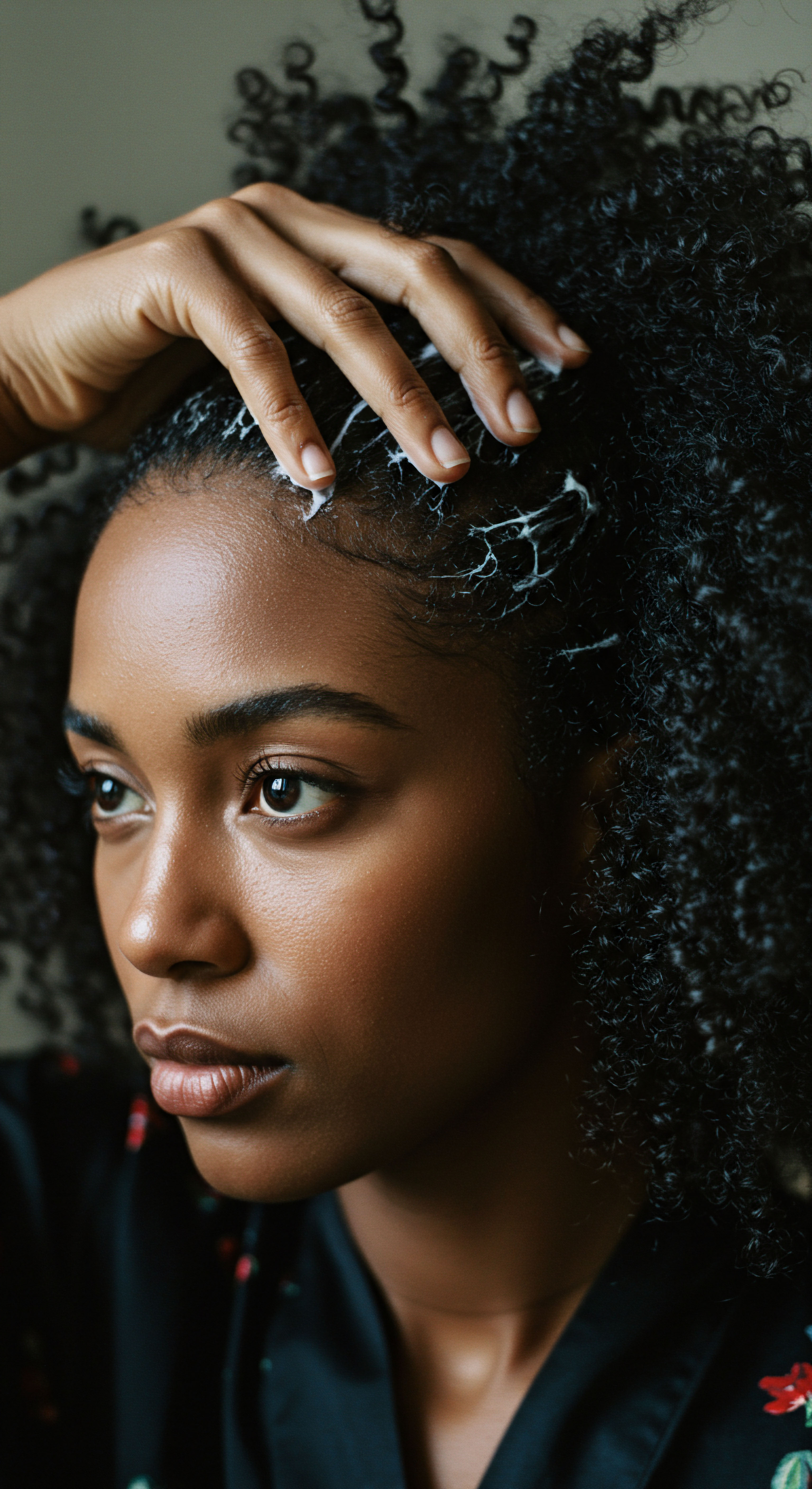
Relay
As we move deeper into the realm of chemical hair alteration, a more profound understanding emerges, one that extends beyond mere surface-level differences. The journey of hair, particularly for those with textured strands, is not simply a matter of chemical reactions but also a complex interplay of historical legacy, personal choice, and the subtle, often unseen, long-term effects on physiological well-being. To truly grasp the implications of lye and no-lye relaxers, we must consider the broader context—the cultural narratives that have shaped their use, the scientific intricacies of their impact on hair integrity, and the evolving discourse surrounding health disparities within beauty practices.
The very act of chemically straightening hair holds a layered significance within many communities. For generations, straightened hair was, for some, a gateway to perceived professional opportunities or social acceptance, a silent concession to Eurocentric beauty standards. This historical context, while shifting with the rise of natural hair movements, continues to influence perceptions and choices. The persistent marketing of relaxers, often with imagery emphasizing “straight,” “smooth,” and “silky” hair, has played a role in perpetuating certain ideals.

Long-Term Physiological Considerations
Beyond the immediate effects of straightening, the long-term physiological impact of chemical relaxers, both lye and no-lye, warrants careful consideration. The highly alkaline nature of these products, regardless of their specific active ingredient, can lead to chronic scalp irritation, inflammation, and even chemical burns if not applied with extreme care. Repeated exposure to such potent chemicals can compromise the scalp’s delicate barrier, potentially affecting hair follicles over time.
A notable area of ongoing research and discussion pertains to the potential link between frequent relaxer use and certain health conditions. Studies have begun to shed light on possible correlations, prompting a deeper examination of the chemicals present in these formulations. For instance, a 2020 study published in the South African Medical Journal, conducted by scientists at the University of Cape Town’s Hair and Skin Research Laboratory, tested commercially sold hair relaxers, including those marketed for children. The research revealed that the pH of all relaxers tested, whether lye or no-lye, was at levels considered corrosive to the skin.
This finding suggests a potential contribution to the high prevalence of alopecia (hair loss) observed in females with afro-textured hair, challenging the common perception that “no-lye” or “children’s” relaxers are significantly safer in terms of scalp corrosivity. This particular data point underscores a less commonly discussed aspect of relaxer use ❉ the inherent corrosivity of the chemical process itself, regardless of the “lye” or “no-lye” designation, and its potential long-term implications for scalp health and hair retention.
The chemical alteration of hair, regardless of relaxer type, involves potent alkalinity that can contribute to long-term scalp concerns and hair fragility.
Furthermore, broader epidemiological studies have indicated associations between frequent use of chemical hair straightening products and an increased risk of certain hormone-sensitive conditions, such as uterine fibroids and even some cancers. A 2019 study, for example, highlighted a correlation between frequent use of chemical hair straighteners and a higher risk of breast cancer. These studies often point to the presence of endocrine-disrupting chemicals (EDCs) within relaxer formulations, which can interfere with the body’s hormonal balance. This ongoing scientific discourse calls for greater transparency and continued investigation into the long-term health ramifications of these widely used products.
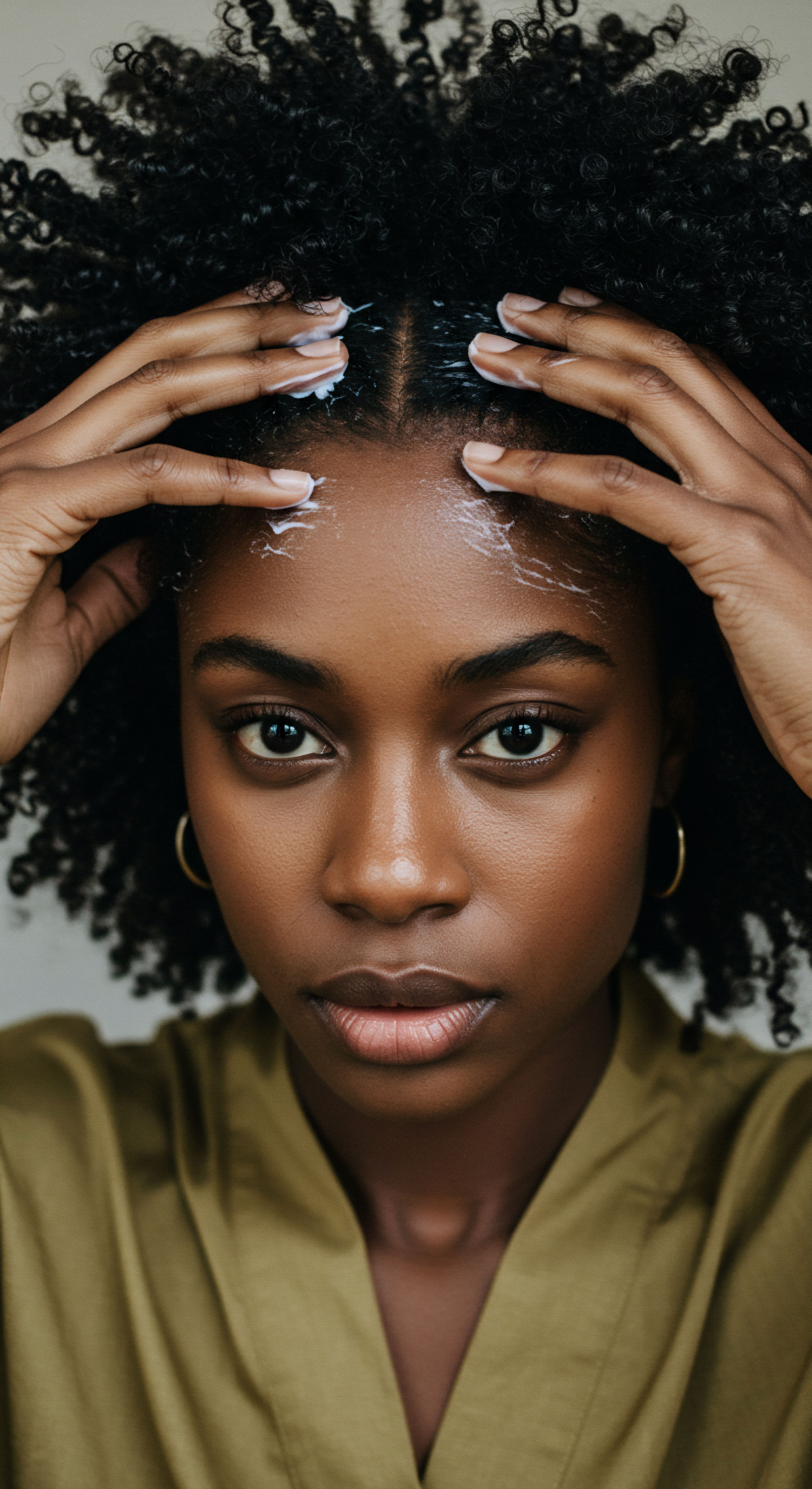
Hair’s Structural Integrity Under Chemical Stress
The impact on the hair’s structural integrity is another critical aspect. While relaxers aim to straighten, they invariably weaken the hair’s natural resilience. The breakage of disulfide bonds, while necessary for straightening, leaves the hair more vulnerable to mechanical stress, environmental factors, and further chemical treatments. Hair that has undergone chemical relaxing often exhibits reduced elasticity and increased porosity, making it more susceptible to dryness and breakage.
Research examining the biochemical effects of relaxers on hair has shown a reduction in cystine levels—a key amino acid forming disulfide bonds—consistent with fragile and damaged hair. While such studies have not always been able to differentiate between lye and no-lye relaxers in their analysis of biochemical changes, the overarching finding points to a general weakening of the hair fiber post-relaxing.

How Does the Chemical Alteration Differ at a Molecular Level?
The molecular permeability of the active ingredients presents a subtle yet significant difference. Sodium Hydroxide in lye relaxers exhibits high molecular permeability, meaning it can rapidly penetrate the hair shaft, reaching the cortex swiftly. This accounts for its fast-acting and powerful straightening capabilities, but also contributes to the heightened risk of rapid damage if not managed expertly.
Conversely, the active ingredients in No-Lye Relaxers, such as calcium hydroxide, generally possess lower molecular permeability. This results in a slower penetration of the hair, leading to a more gradual straightening process. While this might suggest less immediate damage, the slower action can sometimes tempt users to leave the product on longer, potentially leading to cumulative stress on the hair.
The difference also extends to the residue left on the hair. As previously discussed, no-lye relaxers, particularly those containing calcium hydroxide, can result in the deposition of insoluble calcium salts on the hair shaft. This mineral buildup can contribute to a rougher texture, reduced shine, and diminished moisture absorption over time. This contrasts with lye relaxers, which, while potent, typically rinse away more cleanly, leaving less residue on the hair fiber.
Consider the following aspects of their molecular interaction:
- Alkaline Power ❉ Lye relaxers operate at a higher pH, creating a more intensely alkaline environment that drives faster bond breakage.
- Molecular Size ❉ While not explicitly stated as differing in size, the rapid penetration of sodium hydroxide suggests a molecular efficiency that allows it to quickly reach and react with internal hair structures.
- Reaction Byproducts ❉ The formation of calcium deposits is a distinctive byproduct of certain no-lye relaxer reactions, impacting hair texture and moisture.
| Aspect Molecular Penetration |
| Lye Relaxers High permeability, rapid penetration |
| No-Lye Relaxers Lower permeability, gradual penetration |
| Aspect Residual Deposits |
| Lye Relaxers Rinses cleanly, minimal residue |
| No-Lye Relaxers Can leave calcium deposits, requiring chelating |
| Aspect Hair Elasticity Post-Treatment |
| Lye Relaxers Potentially greater preservation of elasticity if applied expertly |
| No-Lye Relaxers Can lead to more significant loss of elasticity due to bond breakage and dryness |
| Aspect Risk of Over-Processing |
| Lye Relaxers High due to rapid action, demanding precision |
| No-Lye Relaxers Still present, but slower action might lead to prolonged application |
| Aspect The subtle molecular differences between lye and no-lye relaxers manifest in distinct outcomes for hair health and maintenance. |
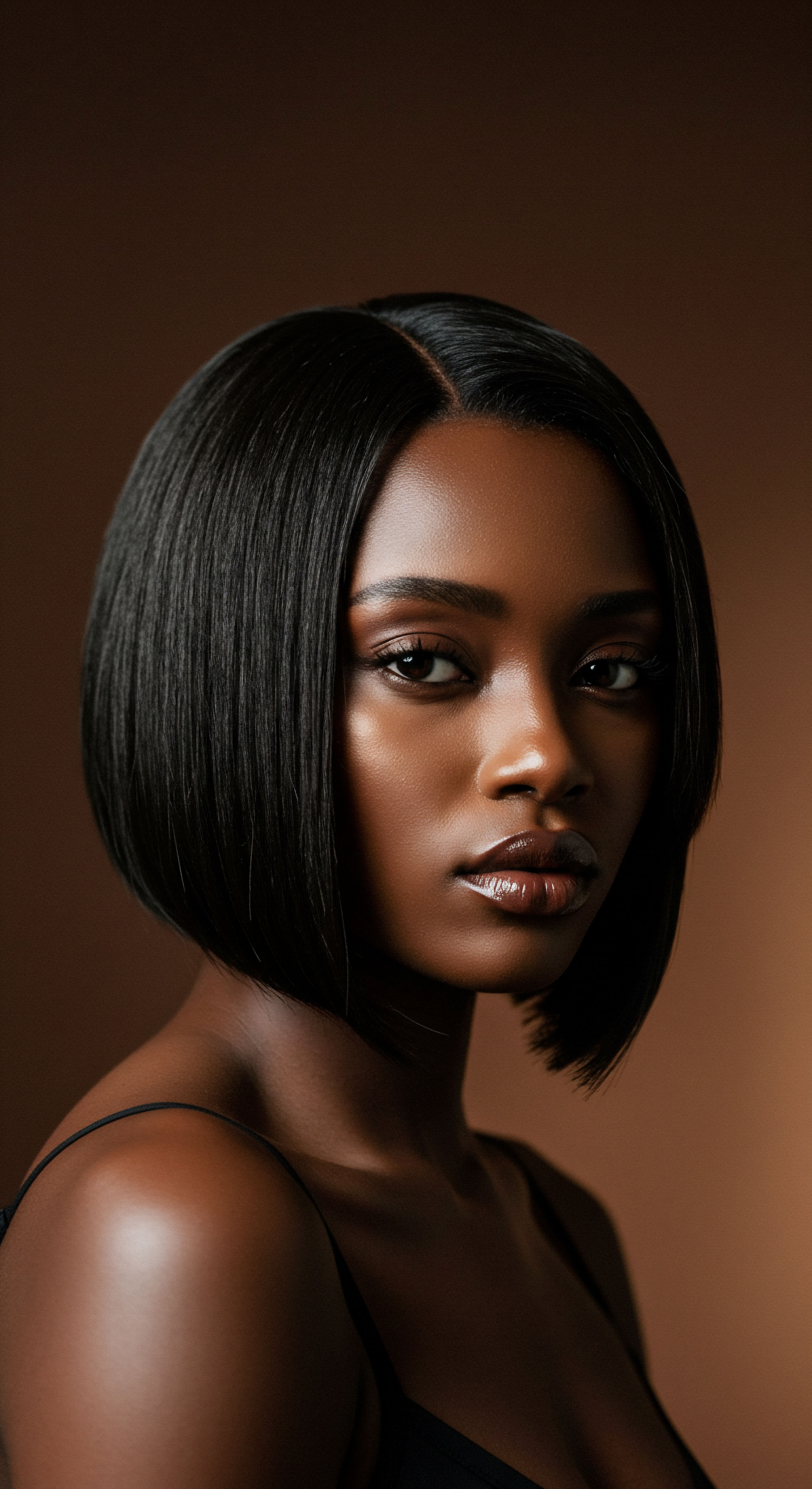
Reflection
The conversation surrounding lye and no-lye relaxers extends far beyond a simple comparison of chemical compounds; it delves into the heart of how we understand and care for textured hair. Each choice, whether in the salon or at home, carries a legacy of historical context, a present reality of chemical interaction, and a future of potential physiological outcomes. Our exploration reveals that while no-lye relaxers may present a milder initial sensation for the scalp, their impact on hair’s moisture balance and the potential for mineral buildup warrant careful consideration.
Conversely, lye relaxers, with their potent, swift action, demand a high level of professional expertise to navigate their power safely. The ongoing scientific inquiry into the long-term effects of these chemical processes underscores the importance of informed decision-making, encouraging us to approach hair care with both knowledge and deep respect for our unique strands.
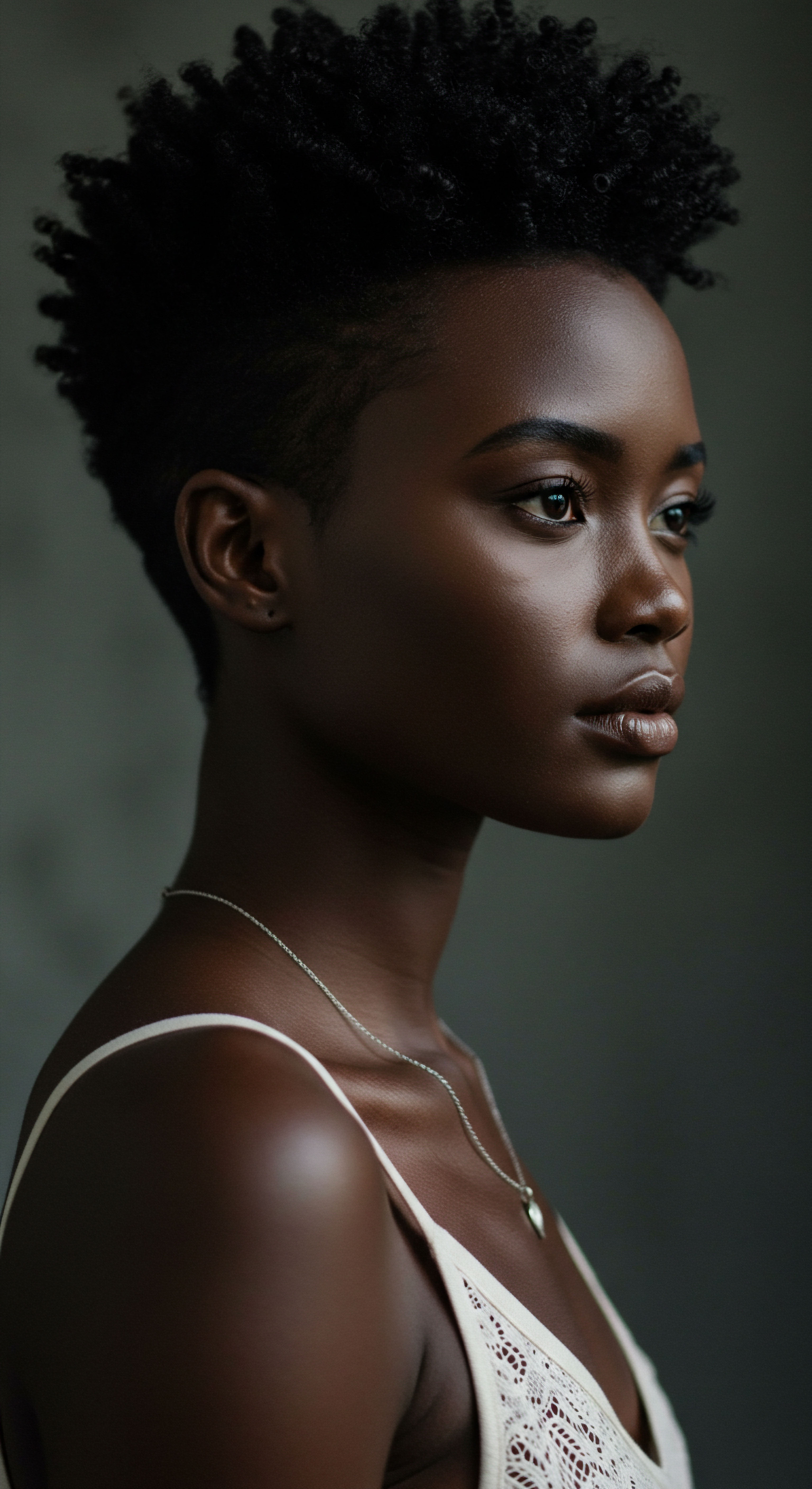
References
- Byrd, A. D. & Tharps, L. (2001). Hair Story ❉ Untangling the Roots of Black Hair in America. St. Martin’s Press.
- Dabbs, L. M. et al. (2020). The pH of lye and no-lye hair relaxers, including those advertised for children, is at levels that are corrosive to the skin. South African Medical Journal, 110(3), 209-212.
- Khumalo, N. P. et al. (2010). ‘Relaxers’ damage hair ❉ Evidence from amino acid analysis. International Journal of Dermatology, 49(11), 1314-1319.
- Khumalo, N. P. et al. (2020). Hair relaxers tested by UCT lab found to be corrosive to skin. University of Cape Town News.
- Park, J. H. et al. (2019). Hair product use and breast cancer risk in a cohort of Black and White women. International Journal of Cancer, 145(8), 2115-2126.
- Rodney, A. R. & Johnson, A. M. (2023). What Every Dermatologist Must Know About the History of Black Hair. Journal of Drugs in Dermatology, 22(11), 1087-1090.
- Sherrow, V. (2006). Encyclopedia of Hair ❉ A Cultural History. Greenwood Press.
- Walker, A. M. (1913). Hair-Straightening Compound. U.S. Patent No. 1,074,383.